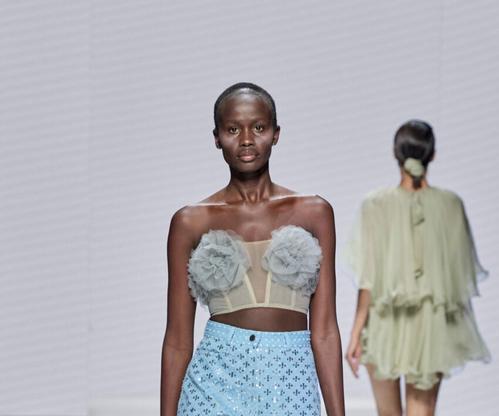
Picture: Supplied
Moscow Fashion Week has long been a stage for showcasing some of Russia’s most dynamic and innovative fashion talent, blending both local aesthetics and global trends. This year, the event highlighted a captivating mix of avant-garde designs, nostalgic themes, and striking visuals.
While BRICS nations include Brazil, Russia, India, China and South Africa, the summit was opened up to many more countries, hence it was titled BRICS+ Fashion Summit
Commenting on the event, the organizers said, “The role of BRICS countries as markets for the global textile sector and fashion brands is gaining strength. After all, BRICS today is the world’s fastest-growing fashion market.
“China is its undisputed leader as the biggest producer and exporter of clothing as well as the biggest consumer. India is the world’s second-biggest producer of textiles.
“The fashion industry in Brazil is expected to show a 3.5% annual growth. South Africa is the key player in the African fashion market today. Experts say Russia’s market for luxury fashion goods will grow by up to 8% a year.
“The BRICS+ countries can transform global fashion, make it more differentiated and decentralised, with a greater focus on local manufacturers, which is in line with sustainable development principles,” reads a statement.
Minimalism
Among the standout shows was Alena Akhmadullina’s, who embraced rich, folkloric influences with a modern twist. Her collection featured vibrant embroidery, flowing silhouettes, and playful use of textures, highlighting a return to artisanal craftsmanship. Complementing her was the work of Igor Chapurin, whose designs brought structured elegance and minimalism to the forefront, playing with metallic tones and refined tailoring that captivated audiences.
Layering, extravagant prints
One dominant trend seen across the catwalks was a revival of maximalism. Layering, extravagant prints, and oversized shapes were frequent, showcasing a desire for bold self-expression. Bright colours like deep emeralds, ruby reds, and royal blues featured prominently, adding an opulent feel to many collections. Additionally, the texture became a focal point; designers incorporated velvet, fur, and lace, echoing Russia’s luxurious fashion heritage.
Gender-neutral fashion
Another key trend was gender-neutral fashion, with unisex silhouettes and flexible styling that worked for diverse audiences. This progressive approach reflected a global shift toward inclusivity and challenged traditional definitions of menswear and womenswear.
Sustainable fashion
Sustainable fashion also gained traction, with numerous designers emphasizing eco-friendly materials and ethical production processes. This shift marks an important step in Russian fashion towards greener practices, resonating with international calls for sustainability.
Ultimately, Moscow Fashion Week highlighted the interplay between Russian cultural heritage and contemporary trends, showcasing a fashion scene that is both rich in tradition and receptive to global influences.
